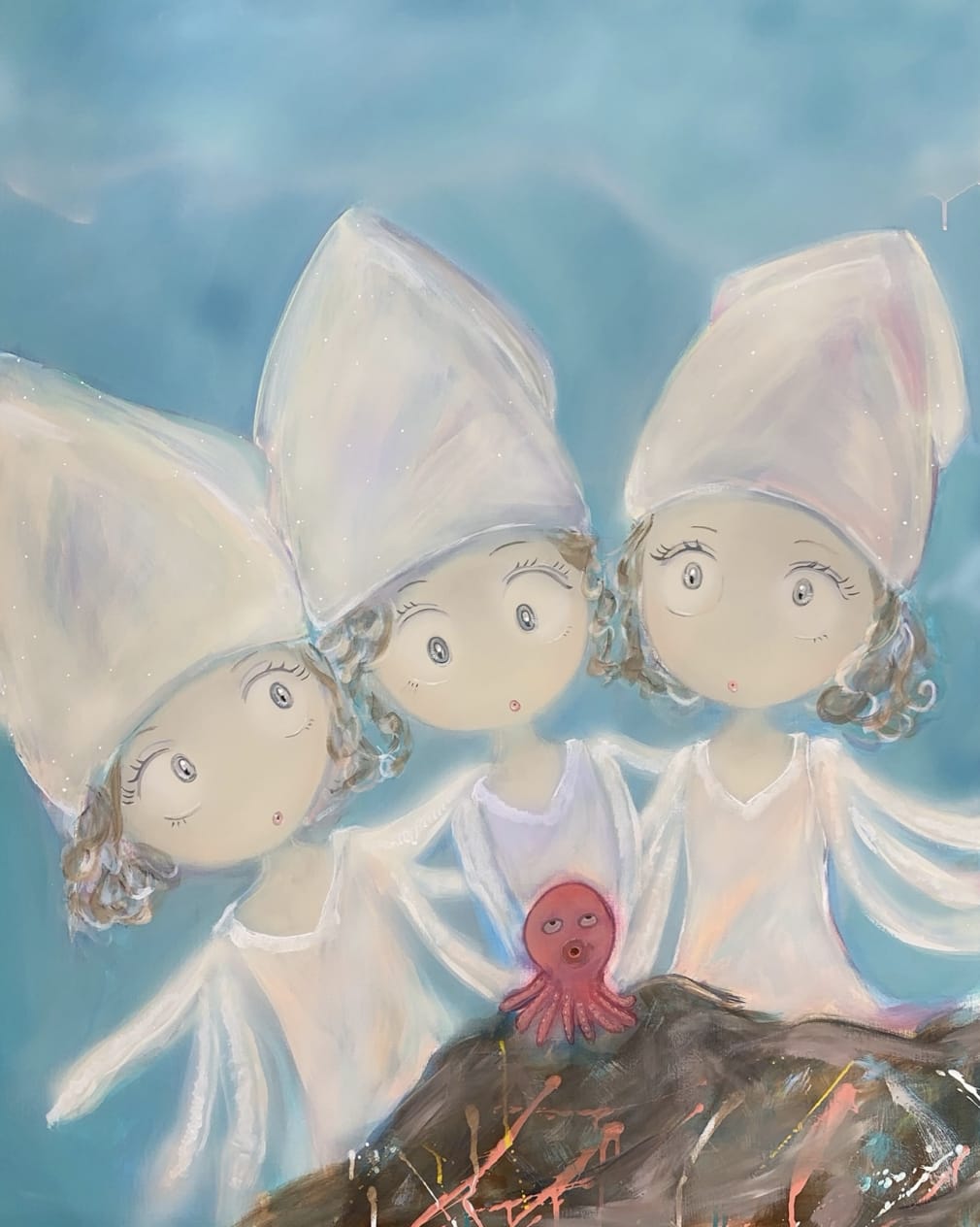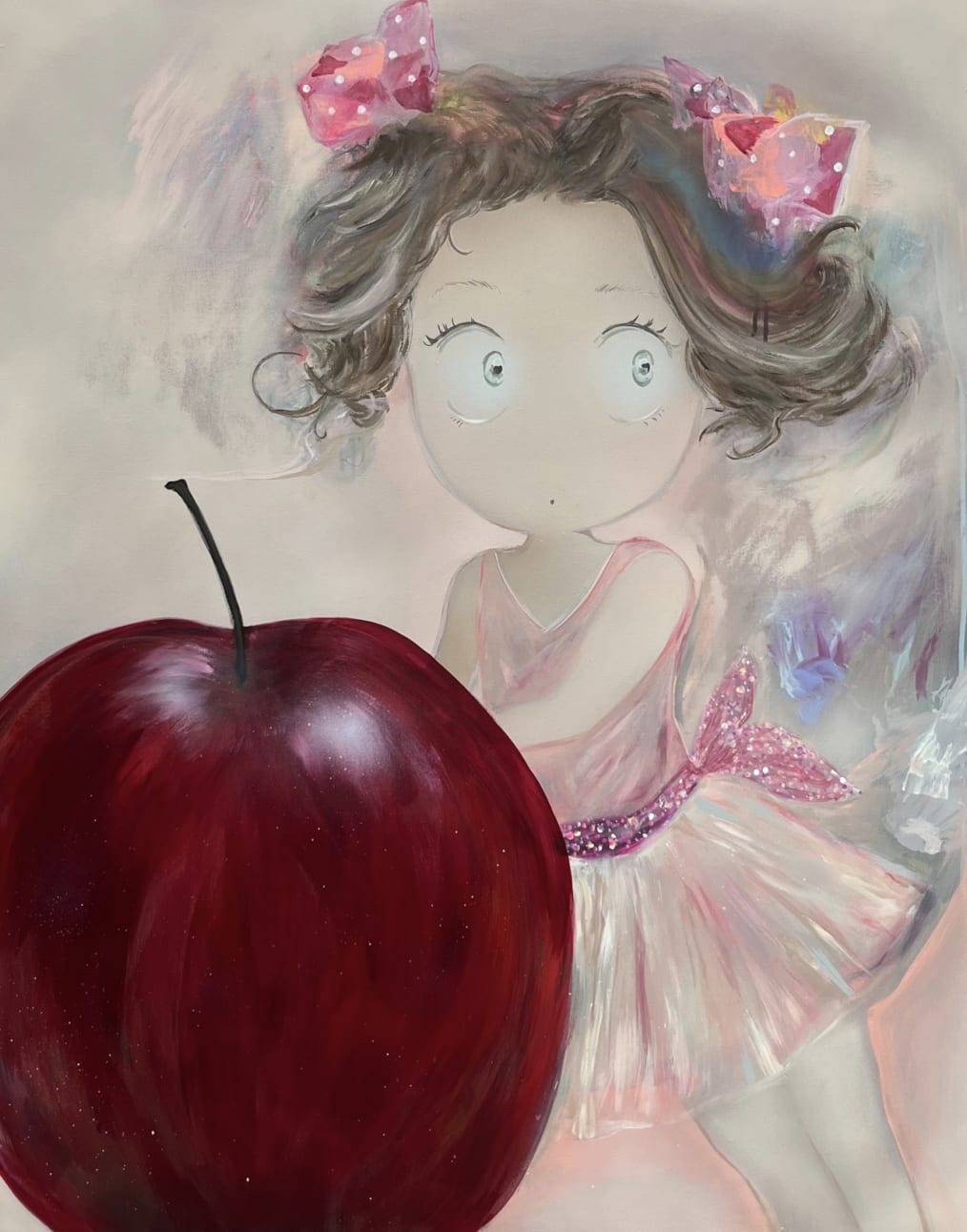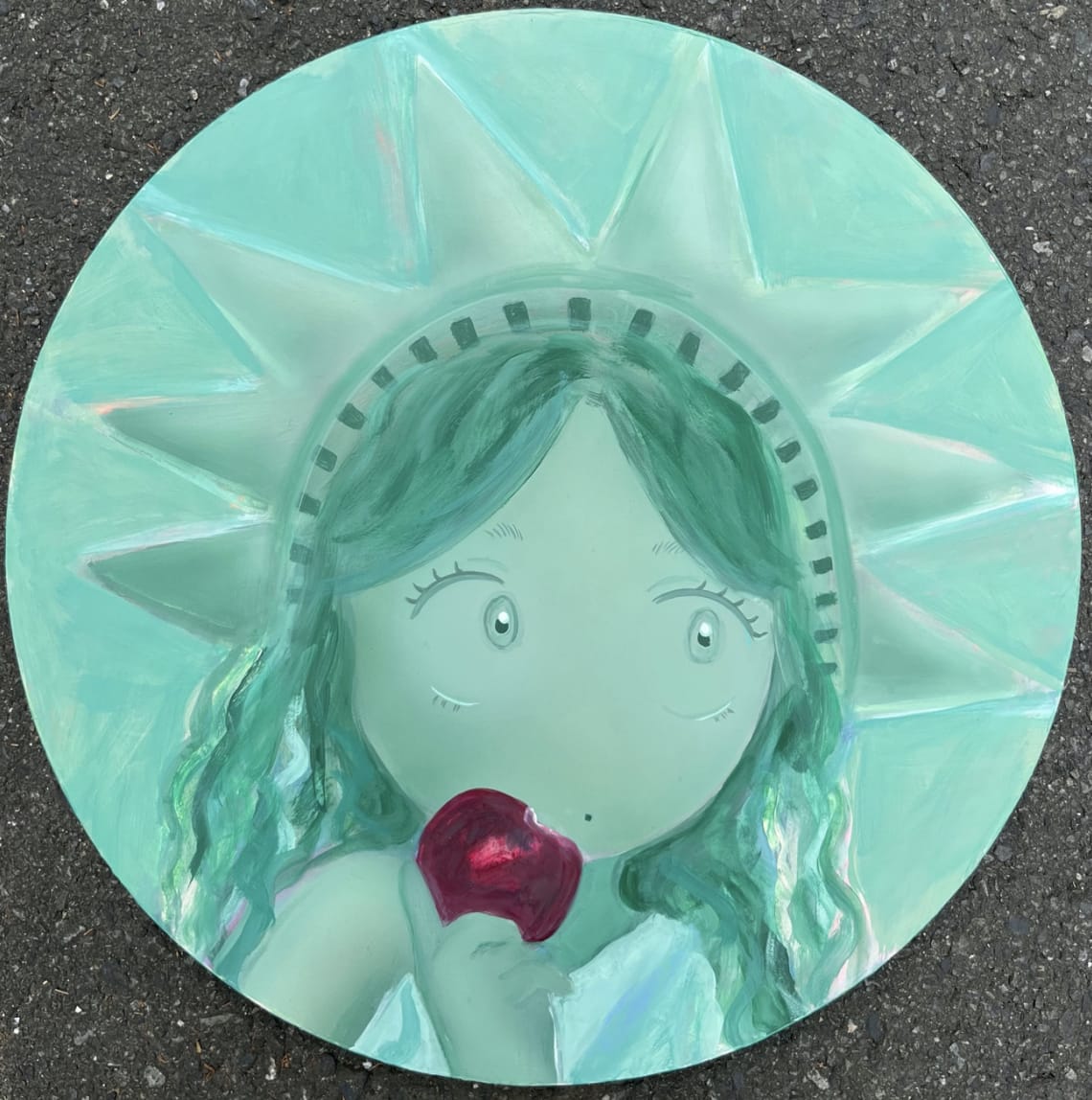Tokita Misuzu, a painter born in Osaka in 1982 and now based in Tokyo, has emerged as one of the most distinctive voices in contemporary Japanese art. Her practice is defined by luminous portraits of young women caught at the threshold between adolescence and adulthood. With eyes that seem to carry entire inner worlds, her subjects balance composure and mystery, inviting viewers into a dialogue about memory, identity, and the quiet moments of becoming.
Inspirations in Tradition and Exchange
Tokita’s work is deeply rooted in Japan’s visual heritage. The flat planes and controlled tonal transitions of ukiyo-e printmaking echo in her canvases, where paint is laid with restraint and confidence. She has also looked outward, engaging with the history of Japonisme and its impact on European artists. In particular, the influence of Alphonse Mucha is apparent in her sinuous lines and compositional elegance. Tokita’s approach is not imitation but conversation: she traces how Japanese aesthetics traveled abroad and then folds that exchange back into her own contemporary idiom.

The Language of Memory
Memory serves as the foundation of Tokita’s artistic inquiry. Her paintings rarely depict literal recollections; instead, they create atmospheres where recollection feels possible. The quiet fields of color surrounding her figures evoke a stillness familiar to anyone who has paused to reflect on their past. By distilling moments of attention, hesitation, or curiosity, Tokita stages universal experiences—the sensation of holding a secret, the anticipation of change, or the quiet act of listening to one’s own thoughts.
Symbols of Growth and Passage
Recurring motifs such as eggs and moons reinforce her exploration of transformation. The egg, emblematic of beginnings and potential, appears in works like prologue-egg and The Secret Egg II. The moon, a marker of cycles and femininity, drifts through her titles and imagery, underscoring the passage of time. These motifs are never overdetermined; instead, they act like musical themes, recurring with variation across canvases and creating a sense of continuity throughout her practice.
Technique and Surface
Tokita’s medium of choice is acrylic, which she uses with remarkable precision. The fast-drying quality allows for smooth, even surfaces, lending her paintings a clarity reminiscent of printmaking. Color reads as light rather than substance, and the figures seem to hover in breathable atmospheres. Each line is purposeful, carrying both contour and rhythm. In this disciplined restraint, Tokita crafts an argument for clarity over excess, for the power of what is left unsaid as much as what is shown.

Exhibitions and Recognition
Her work has increasingly gained international attention. Tokita has been exhibited in Tokyo and New York, and most recently in Hong Kong, where NO IDEA GALLERY presented both a solo exhibition in 2024 and a follow-up showcase in 2025. These exhibitions emphasized her dialogue with Japanese tradition and the cross-cultural flows of Japonisme. Across these venues, her paintings have proven resonant, bridging local heritage and universal themes of memory and identity.
A Personal and Cultural Background
Growing up in Osaka before moving to Tokyo, Tokita developed a sensitivity to place and atmosphere that informs her work. The interplay of nature and urban life, of light and stillness, seeps into her canvases. For her, painting becomes a way to ask fundamental questions about what it means to be human, how early impressions of home and nature linger in us, and how these impressions shape our perception of adulthood.
Between Ornament and Consciousness
Though inspired by Mucha and Art Nouveau, Tokita is less concerned with decorative flourish than with psychological presence. Her figures, often centered and isolated, project a stillness that feels both personal and universal. Their eyes, bright yet unreadable, mirror the viewer’s own memories and uncertainties. In this, Tokita offers less a portrait of another person than an invitation to recognize oneself.

A Practice of Continuity
Recent works such as Full Moon, prologue-egg, and The Secret Egg II demonstrate her commitment to refining a consistent visual language. Each canvas feels like a stanza in an ongoing poem, where themes of memory, growth, and quiet reflection are revisited with subtle variations. This continuity underscores her belief in depth over novelty, in the value of returning to the same questions to discover new inflections.
An Invitation to Pause
In a culture saturated with images, Tokita Misuzu’s paintings stand apart as spaces of pause. They invite viewers to linger in silence, to hold a question without demanding an immediate answer. Her figures feel less like depictions than presences—calm companions who remind us of the fragile thresholds we cross in our own lives. The balance between what is seen and what is left for the viewer to sense may be her most enduring contribution.
Tokita’s art, at once rooted in tradition and alive with contemporary resonance, illuminates the delicate juncture between memory and imagination. By distilling the complexity of human growth into serene, luminous portraits, she creates a space where the viewer can pause, reflect, and rediscover the quiet truths of becoming.
For more information on Tokita Misuzu or to inquire, please contact us directly by email at info@guyhepner.com
